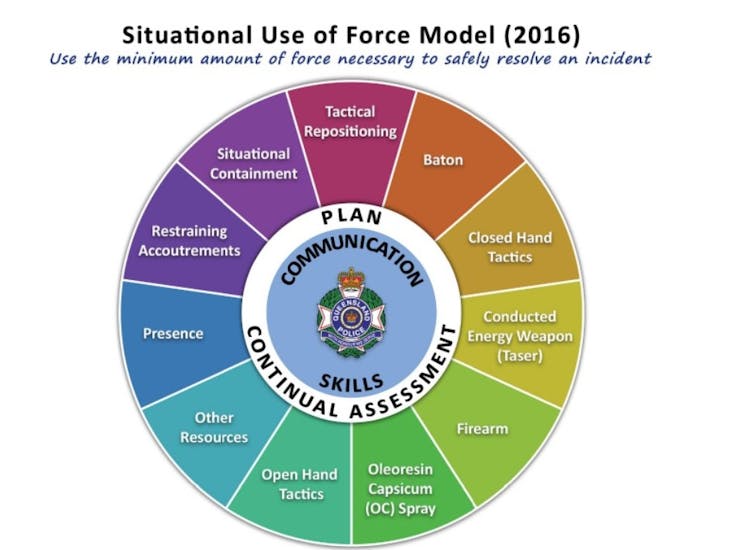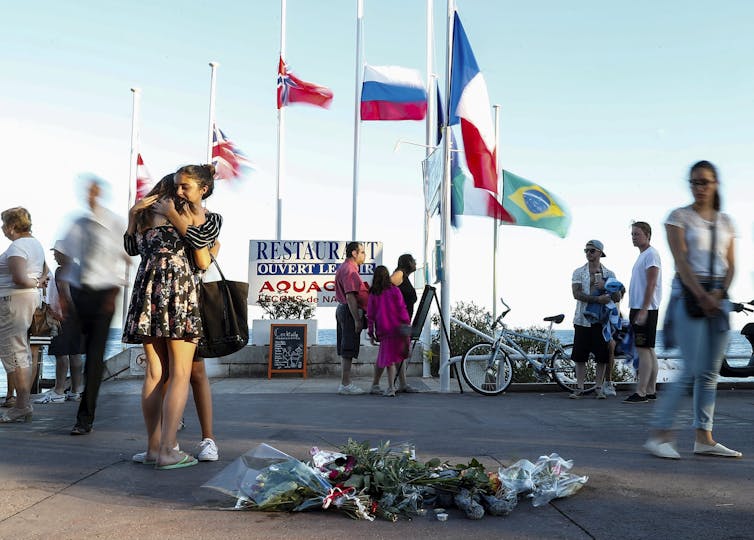Victorian police have 'shoot to kill' powers when cars are used as weapons: here's why this matters
- Written by Terry Goldsworthy, Associate Professor in Criminology, Bond University
This week, the Victorian police announced a “hostile vehicle” policy, which supports officers to shoot a driver to stop a vehicle deemed to be hostile and a danger to the public.
The policy comes into the force on the eve of a coronial inquest into the crimes of James Gargasoulas, who was convicted of six murders using his car in Bourke Street in Melbourne’s CBD in 2017. This policy doesn’t grant police new powers, but clarifies their responsibilities in facing a hostile driver.
Read more: The link between terrorism and mental illness is complicated, and vilifying communities doesn't help
But What threat levels do these kind of attacks represent, and will the new approach be effective?
The justification for the policy
Victoria police have claimed the policy will:
empower officers to take decisive action in the event of a hostile vehicle attack.
It will allow police to use of a range of tactical options in response to a hostile vehicle attack, including the ability to ram offending vehicles, use roadblocks, box in a vehicle or, as a last resort, shoot the offender.
It follows previous legislative changes in Victoria that aimed to clarify laws on lethal use of force and give officers more confidence and protection when using them.
The laws aimed to
clarify police powers to use lethal force in response to a life-threatening act where it may be the last opportunity to safely and effectively intervene.
Such moves to increase protections of police when they use lethal force also occurred after the Lindt Cafe seige in Sydney. Then, the legal ability for police to use lethal force before any hostages were harmed was unclear.
 Situational use of force model that shows the various tactical options available to Queensland police.
Queensland Police Service
Situational use of force model that shows the various tactical options available to Queensland police.
Queensland Police Service
The tactical options police can use expand when the weapon being used is a vehicle. In this scenario, police are not only bound by use of force policies, but also by police pursuit policies. For instance, pursuit policies will govern the use of road spikes and pursuit intervention techniques, such as boxing in or heading off a vehicle.
Read more: In crime reporting, we should ask better questions about the relevance of religion and ethnicity
In essence, every police service in Australia has the ability to use lethal force where there is a reasonable threat the offender will inflict death or serious injury to the officer or a member of the public.
In response to perceived terrorist threats to the public, Australian police have increased general duty officers’ accessibility to military style weaponry in recent years.
What is a hostile vehicle attack?
The use of hostile vehicles has gained notoriety as a low-tech way to conduct a terrorist attack with mass casualties.
In its hostile vehicle guidelines, the Australian and New Zealand Counter Terrorism Committee defines a hostile vehicle as
generally one whose driver is determined to access a restricted or unauthorised area or location in order to cause injury/death to people, disrupt business or effect publicity for a cause.
A hostile vehicle may be used to carry an explosive device or the vehicle itself, travelling at speed, may present the primary danger.
Read more: Barcelona attack: a long war against Islamic terrorism is our reality
Using such a means to attack requires little training or preparation from the terrorist. And this lack of planning means it’s extremely difficult for authorities to preempt. Such attacks allow for lone wolf type terrorist operations.
But, as the Gargasoulas incident showed, the use of hostile vehicles is not limited to those committing terrorist acts – they can also be used in non-terrorist criminal events.
Hostile vehicles are not new threats
Ramming into crowds with vehicles is not a new phenomenon. Such terrorist attacks have occurred since 2006, but gained widespread attention in 2016 when a lone offender drove a truck into a large crowd celebrating Bastille day, killing 86 people in Nice, France.
 In Nice, France, a lone offender drove a truck into a large crowd celebrating Bastille day in 2016, killing 86 people.
Ian Langsdon/ AAP
In Nice, France, a lone offender drove a truck into a large crowd celebrating Bastille day in 2016, killing 86 people.
Ian Langsdon/ AAP
Another truck attack in Berlin killed 12 people a few months later.
Read more: Berlin attack: security intelligence has limits in preventing truck-borne terror
As a method of attack in Islamist extremist incidents in Western countries, vehicles are becoming more prevalent.
The United States Transport Security Administration termed these attacks as “vehicle ramming”. A 2017 report noted that
from 2014 through 2017, terrorists carried out 17 known vehicle ramming attacks worldwide, resulting in 173 fatalities and 667 injuries.
In terms of the threat to police, one study showed between 1951 and 2007, the deliberate use of a vehicle killed four police in Australia, which is 1.4% of the 281 total police deaths for that period.
Clearer policy for weaponised vehicles
The Victoria Police policy has reinforced what other police services have had in place. Police have always been justified to shoot at a moving vehicle when it’s used as a weapon. The difference now is the policy has been clarified to reflect the changing times, when vehicles are more often used as weapons.
There are clearly risks in shooting at a moving vehicle. Unlike what happens in films, bullets generally do not stop moving trucks or cars.
Shooting the driver may stop the vehicle. Alternatively, the vehicle may continue on as an unguided threat into bystanders.
For instance, in Queensland’s Operational Procedures Manual, states that shooting at a moving vehicle comes with the risk the driver will lose control of the vehicle, putting the offenders, officers and the public in danger.
Even if the driver or vehicle’s engine is immediately incapacitated, the vehicle will continue to travel until stopped by external means, usually a collision.
However, the Queensland policy states police may fire at a vehicle if it’s being used as a weapon.
Read more: Shoot to kill: the use of lethal force by police in Australia
While much of the focus this week is on the use of force, the issues around the management of police pursuits will come into focus in the coronial inquest into the actions of Victoria Police in the lead up to the events in Bourke Street.
Police will still need to conduct a thorough risk assessment before they shoot at a moving vehicle, and most likely such actions will only be justifiable in the most serious of scenarios.
Authors: Terry Goldsworthy, Associate Professor in Criminology, Bond University





